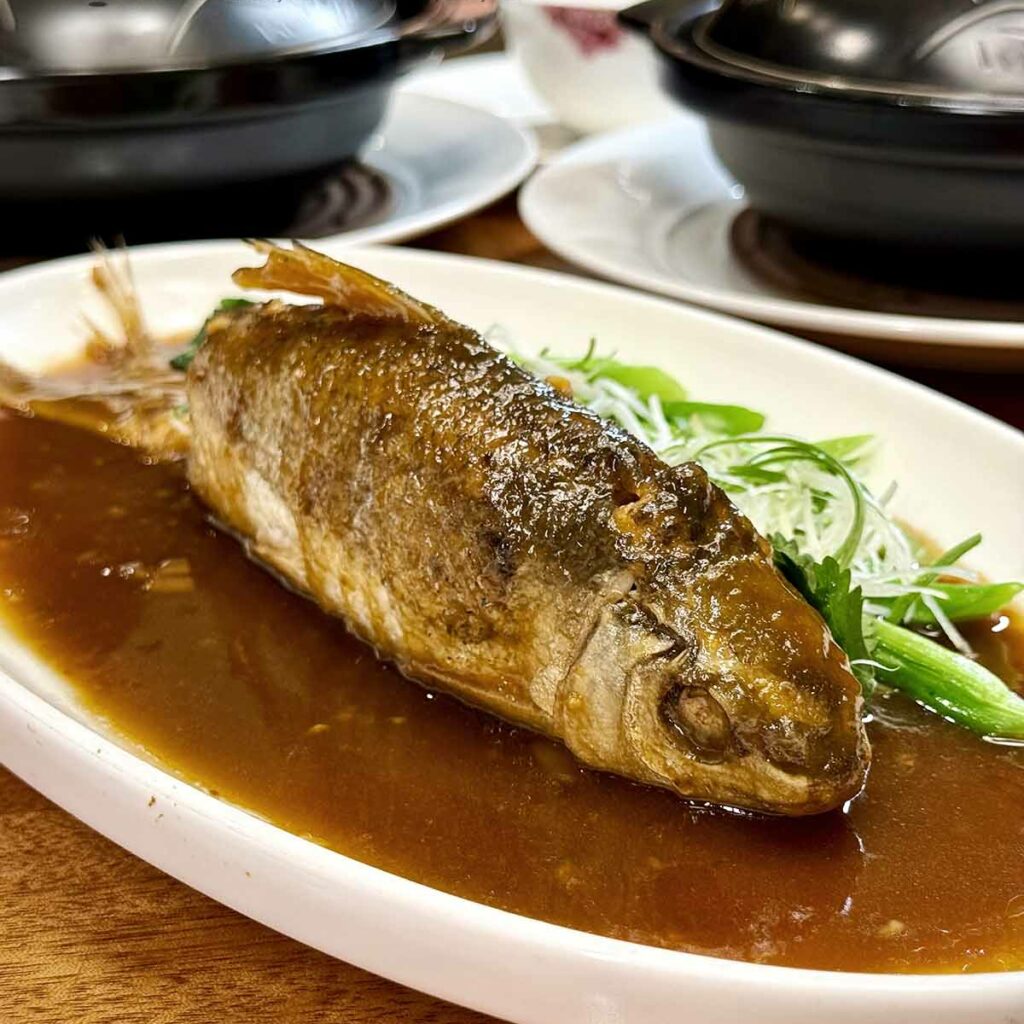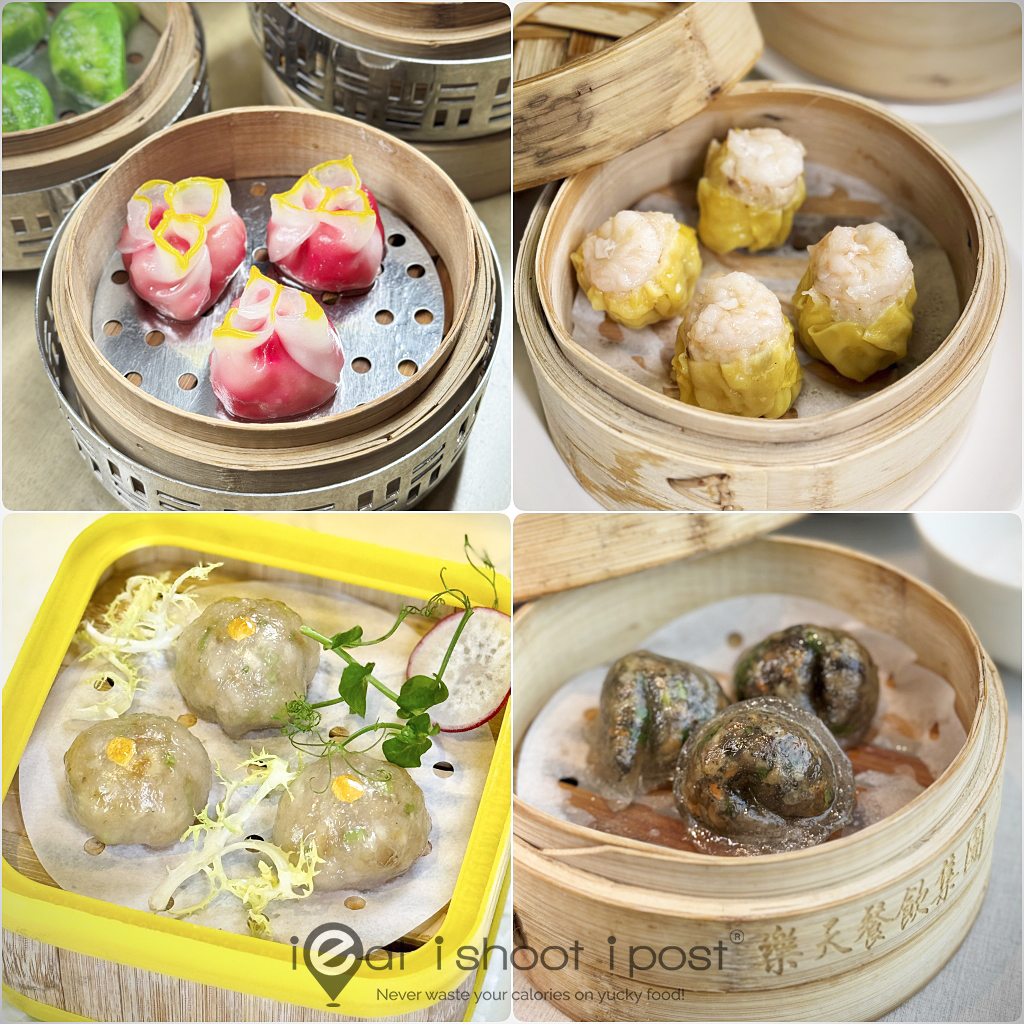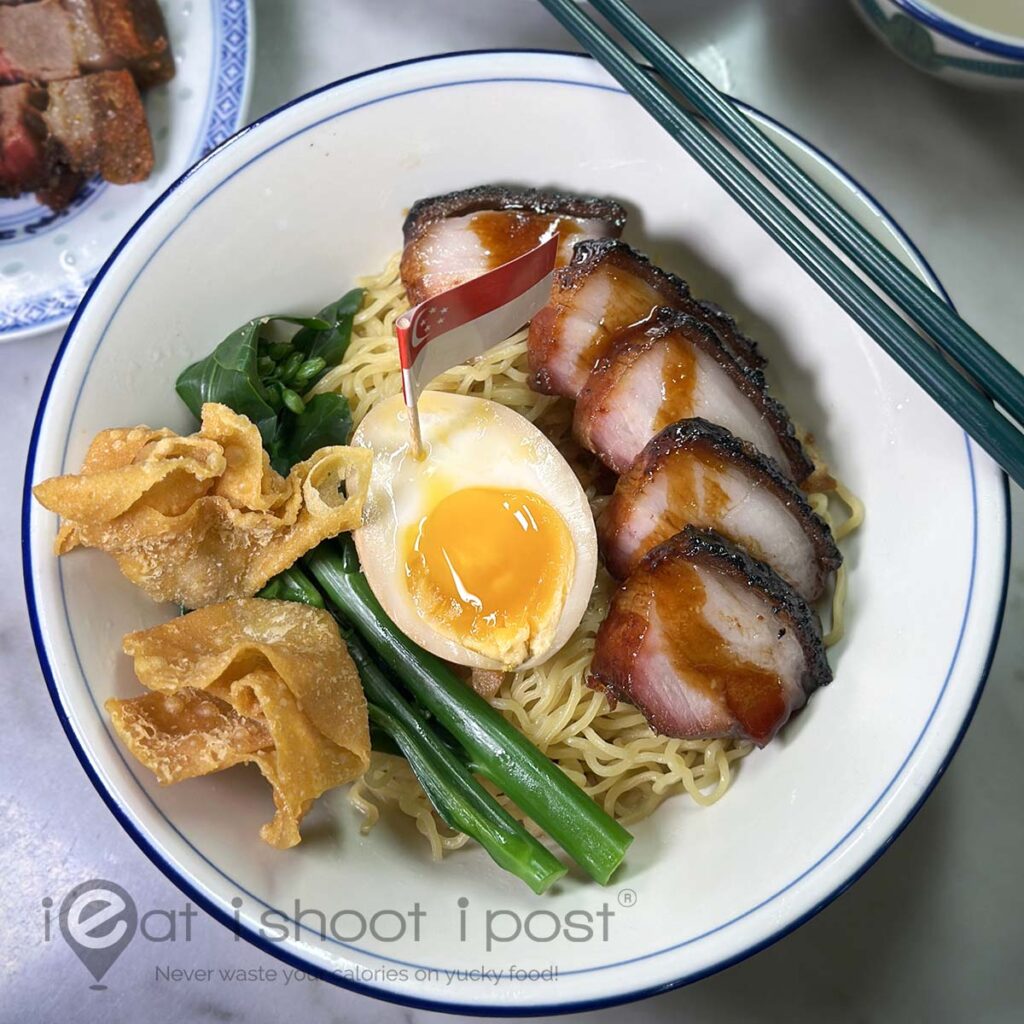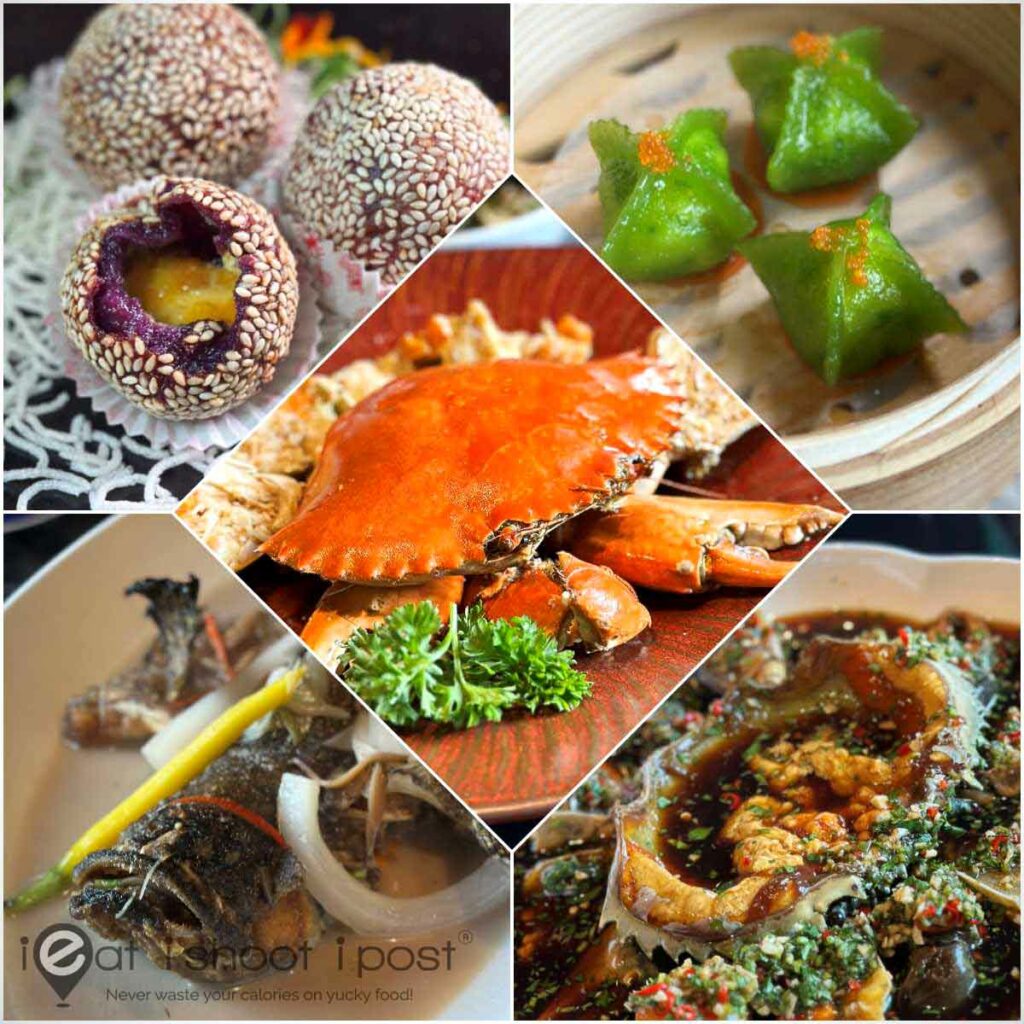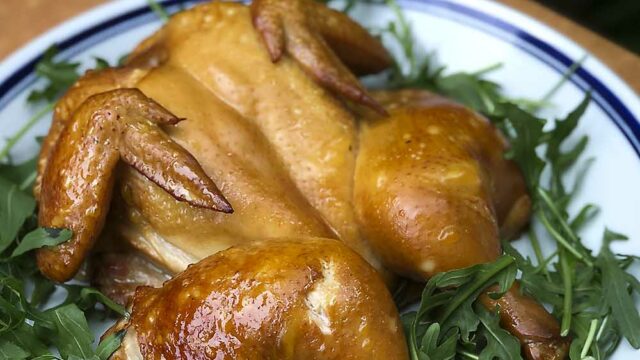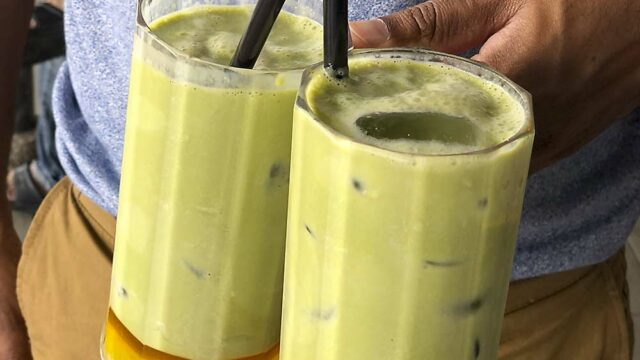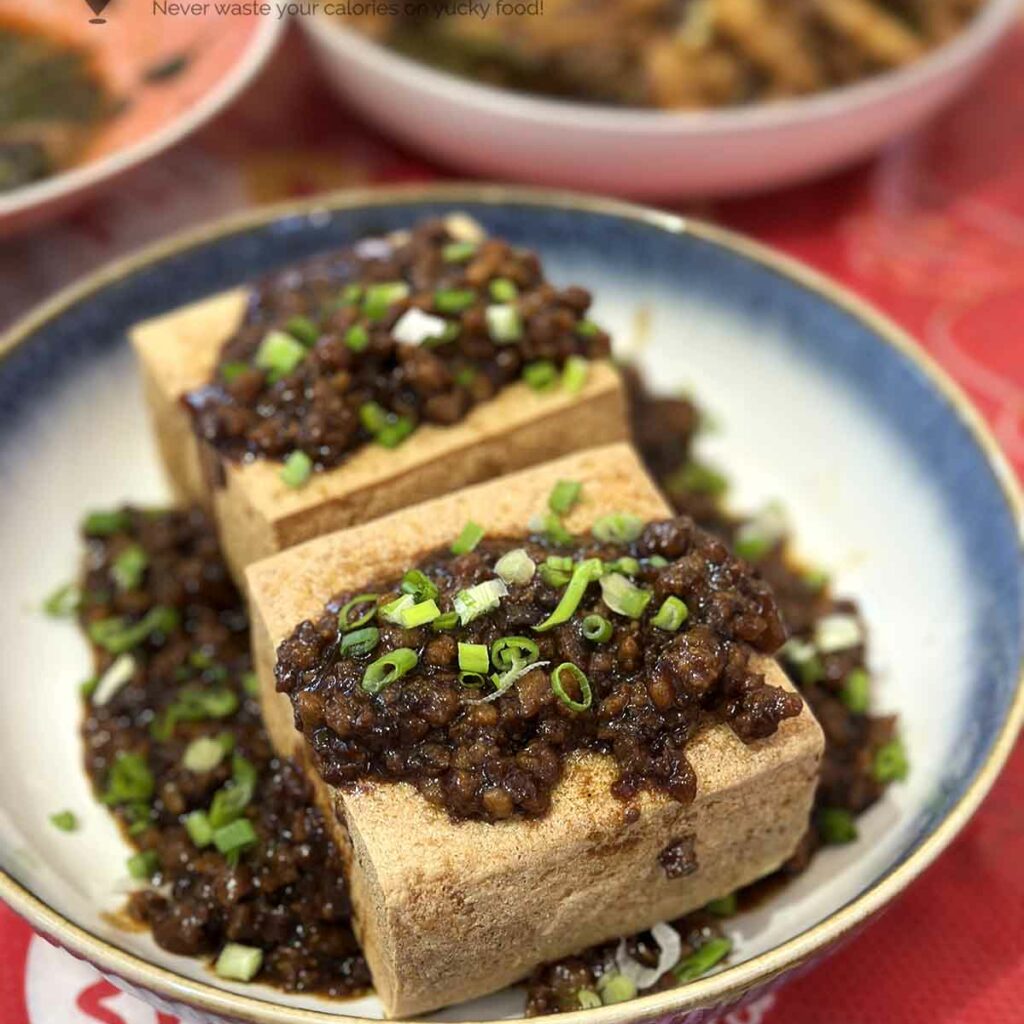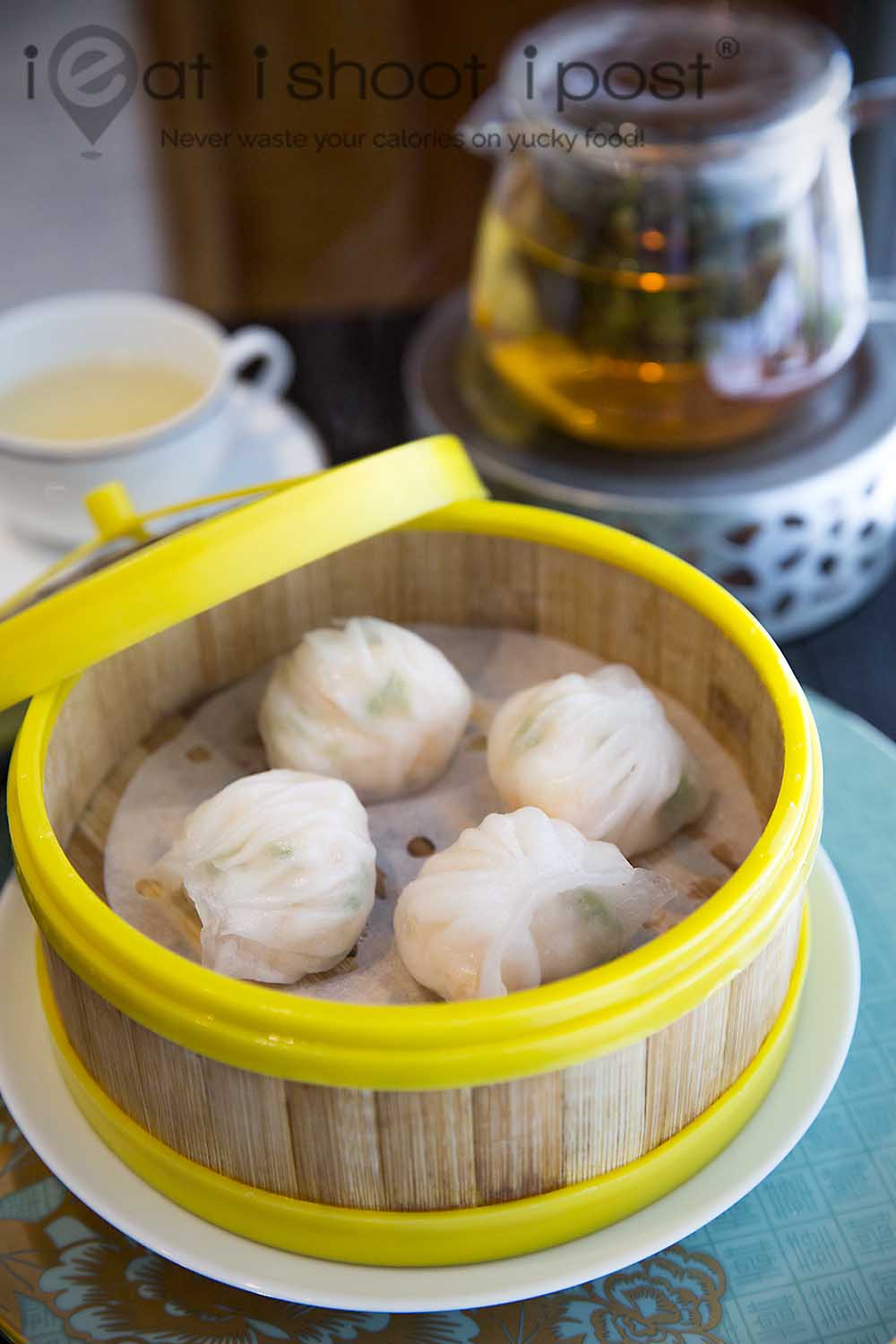
Posted by ieat and Feieats
Hua Ting Restaurant: The Dim Sum Tutorial – ieatishootipost
Close your eyes.
OK, read the next sentence then close your eyes.
Think about dim sum. (Now close your eyes)
What are the first three items that come to mind? I’d bet that they were Har Gou (shrimp dumpling), Siew Mai and Charsiu Bao, (BBQ Pork Bun) right?
Even if these three items were not the ones you thought about, it is hard to imagine any dim sum place that doesn’t have these three basic items on their menu. We might be very familiar with them but have you ever really thought about how a dim sum sifu would assess the quality of a dim sum dish?
To find out, we arranged to meet with Head Chef Chung Lap Fai of Hua Ting Restaurant to learn the basics of dimsumnology.
Har Gao (虾饺) Shrimp Dumpling
Our dim sum lesson started with the quintessential dim sum dish — Har Gao (虾饺 -shrimp dumplings) which also happens to be our kids’ all time favourite. This tasty little dumpling is said to have originated in a teahouse located right next to a river in Wucu village in a suburban part of Guangzhou. Prawns were readily available from the river and the owner of the teahouse would catch them to make har gao.
Chef explained that you can tell a good Har Gao simply by looking at it. The skin should be thin and translucent so that you can see the rosy pink shrimp meat within. Now observe the symmetry and shape of the dumpling. Does it look well made? Are the folds uniform? Now pick up the Har Gao with your chopsticks. Is the skin resilient enough so that it doesn’t break? Is the surface soft and tacky that it leaves a film of gooey starch on your chopsticks? Now put the Har Gao in your mouth. The skin should be tender but still have a nice chew and the shrimp meat must be juicy and have a good bouncy bite and the prawn flavour should be fresh like the ocean breeze. 4.25/5
Siew Mai (烧卖)

Next, we have Siew Mai (烧卖) which literally translates as “cook-sell” This dumpling’s history can be traced back to the Song Dynasty (960-1279 AD) and was served in tea houses for weary travelers along the ancient silk route.
We learnt that a good Siew Mai will have 1/3rd shrimp and 2/3rds minced pork. The shrimp in a Siew Mai is firmer compared to the Har Gao because this dumpling needs to be steamed longer to ensure that the pork is cooked. We also learnt that in the early days, the red topping on a Siew Mai was mashed-up hard boiled eggs, dyed red! Nowadays, it is not uncommon to find mentaiko as a topping. 4.25/5
Char Siu Bao (烧包 )Steam Barbeque Pork Bun

Have you ever wondered why the Charsiu Bao in Cantonese Dim Sum restaurants puff up into a three petal pattern while their local cousins do not? Chef Lap explained that its not just in the amount of leavening used. To have that perfect “bloom” and flavour, the dough cannot be done from scratch but needs an established “mother” starter. When Hua Ting underwent renovation works, Chef had to get his friend to pass him a starter dough in order to help kick-start his charsiu bao dough!
A good Charsiu bao should have a BBQ pork filling that is moist enough to complement the pillowy white bao skin. This can only be achieved through a long cooking process such that the juices have gelled together just enough such that it has the right consistency even after it cools down after steaming! 4.25/5
Cheong Fun (肠粉) Steam Rice Noodle Roll

A good Cheong Fun is judged on the quality of the rice rolls which should be tender, slippery yet resilient enough to be picked up by the chopsticks. The sauce should have a depth of flavour and complexity and not just straightforward salty and sweet. This means that a good sauce would need to be to be cooked with various ingredients in order to produce that ooomph we all love. After its recent renovations, Hua Ting has started to serve their cheong fun in bite sized portions much like sushi which can be picked up with the chopsticks easily! It is a new way of presenting chee cheong fun which actually makes a lot of sense! 4.25/5
Fried Carrot or Turnip Cake (煎萝卜糕)
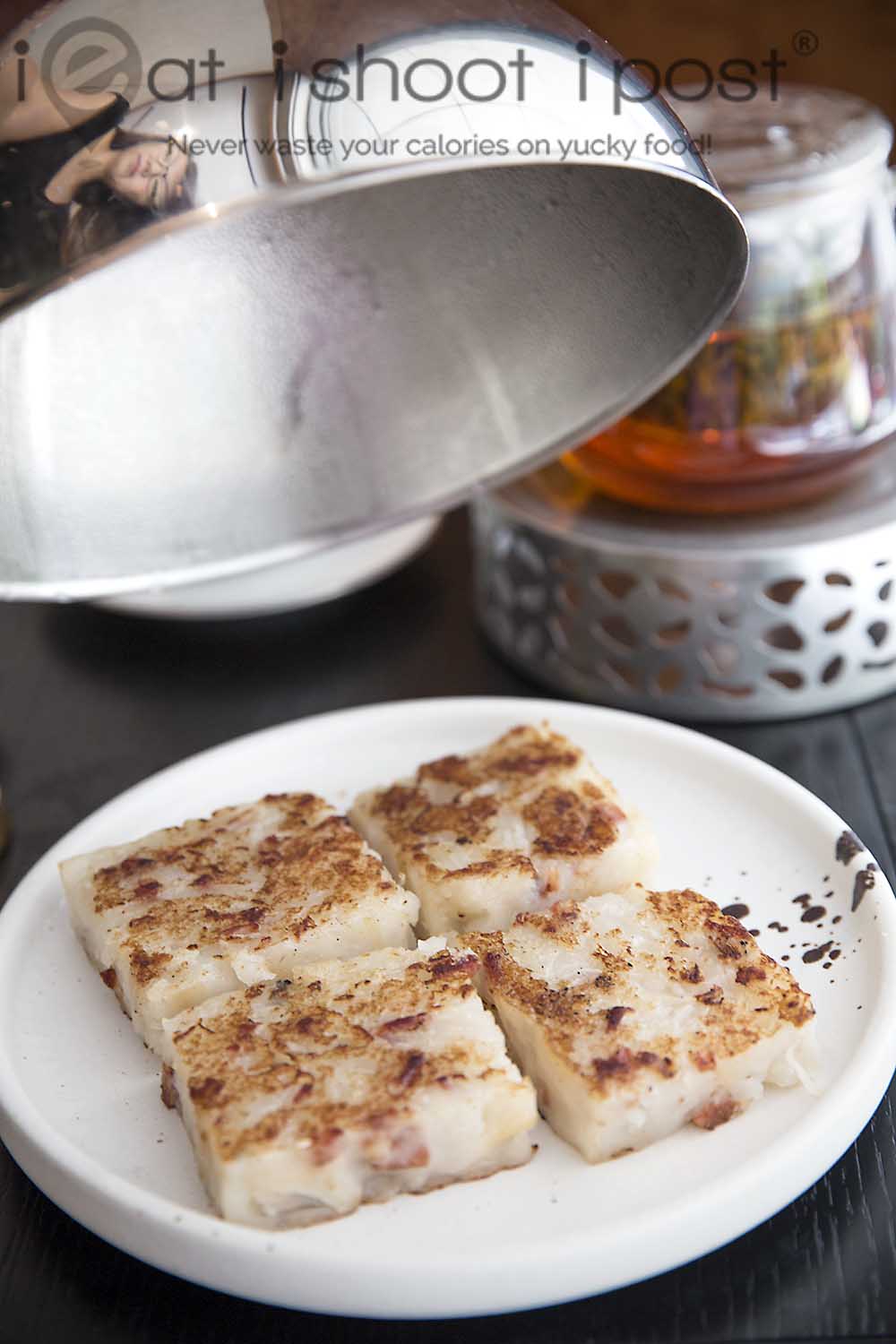
Why is there no carrot in carrot cake? Well, 萝卜(pronounced Luo Bo) is the basic word for “carrots” in Chinese. Since white radish ie 白萝卜(white carrot) is the main ingredient in the dish, someone in the past must have translated it as ” white carrot cake” which was subsequently shortened to “carrot cake”. The hawker version (Chai Tau Kueh) is also called “carrot cake” but is prepared differently from the dim sum version as it doesn’t have ingredients like lup cheong added to it.
The “cake”, which is made of white radish, rice flour, conpoy, lup choeng and mushrooms is first steamed, then cut into squares to be pan-fried. A good carrot cake must have the right texture where it is tender on the inside but develops a nice crust on the outside when pan fried. You should be able to bite into the radish which has to be hand cut rather than shredded so that it retains that characteristic bite.
The carrot cake at Hua Ting was one of the most memorable ones that I have come across. The flavour is rich with conpoy and lup cheong and the texture is excellent! 4.5/5
Hua Ting Signature Dishes
Hua Ting is always coming up with new items every five weeks in order to provide something new for regular customers. The most popular items might then get included into the menu. Here are a few of their latest dim sum creations and some old ones which have become signatures:
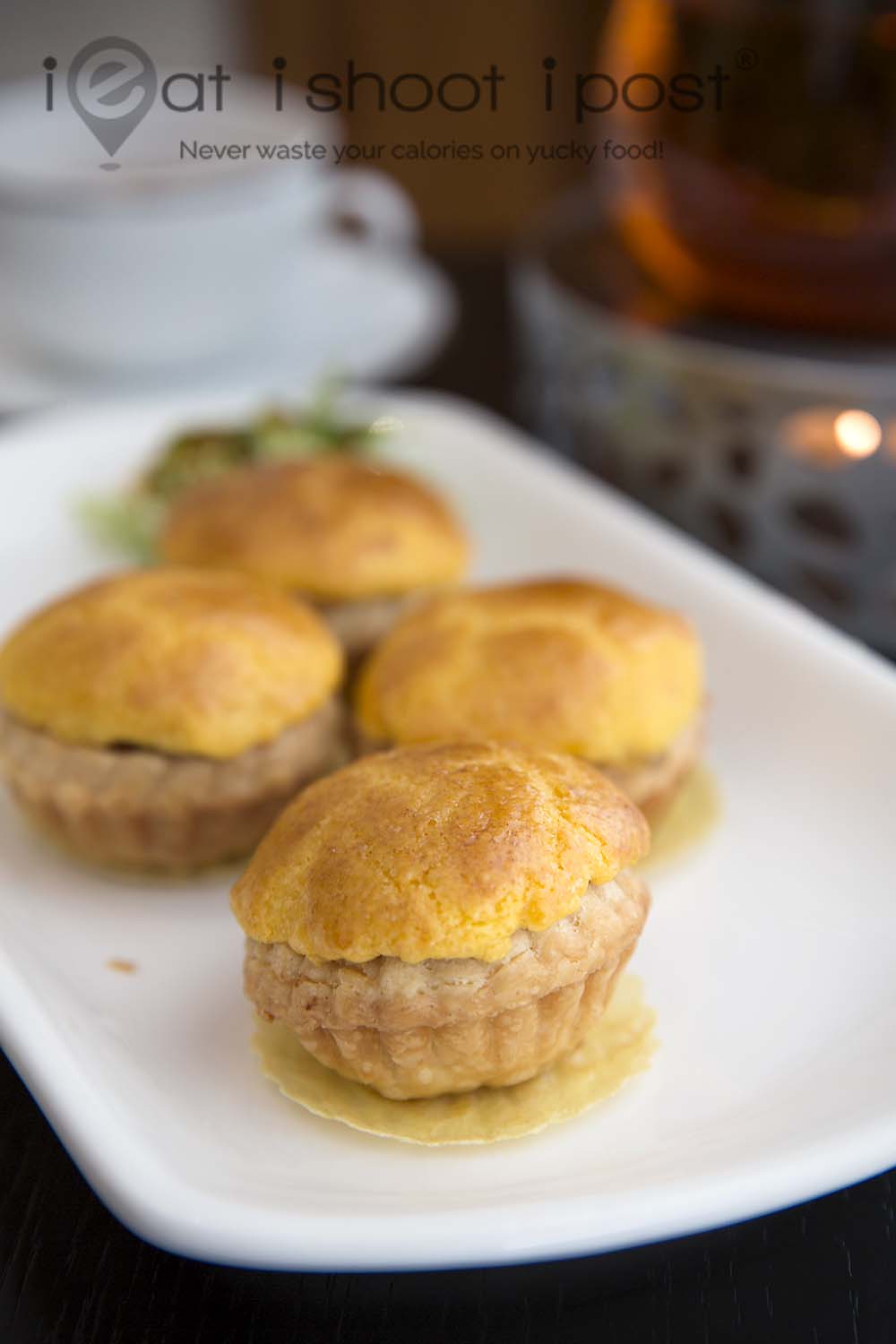
The Baked Mango Chicken Tartlet’s ($6.60 for three) flaky, buttery pasty is filled with a surprisingly wonderful combination of chicken and mango and topped with a sweet cookie crust — the same one used in the polo bao. It is a little decadent, but it really does stand out as one of the best pastries I have come across at a dim sum. 4.5/5
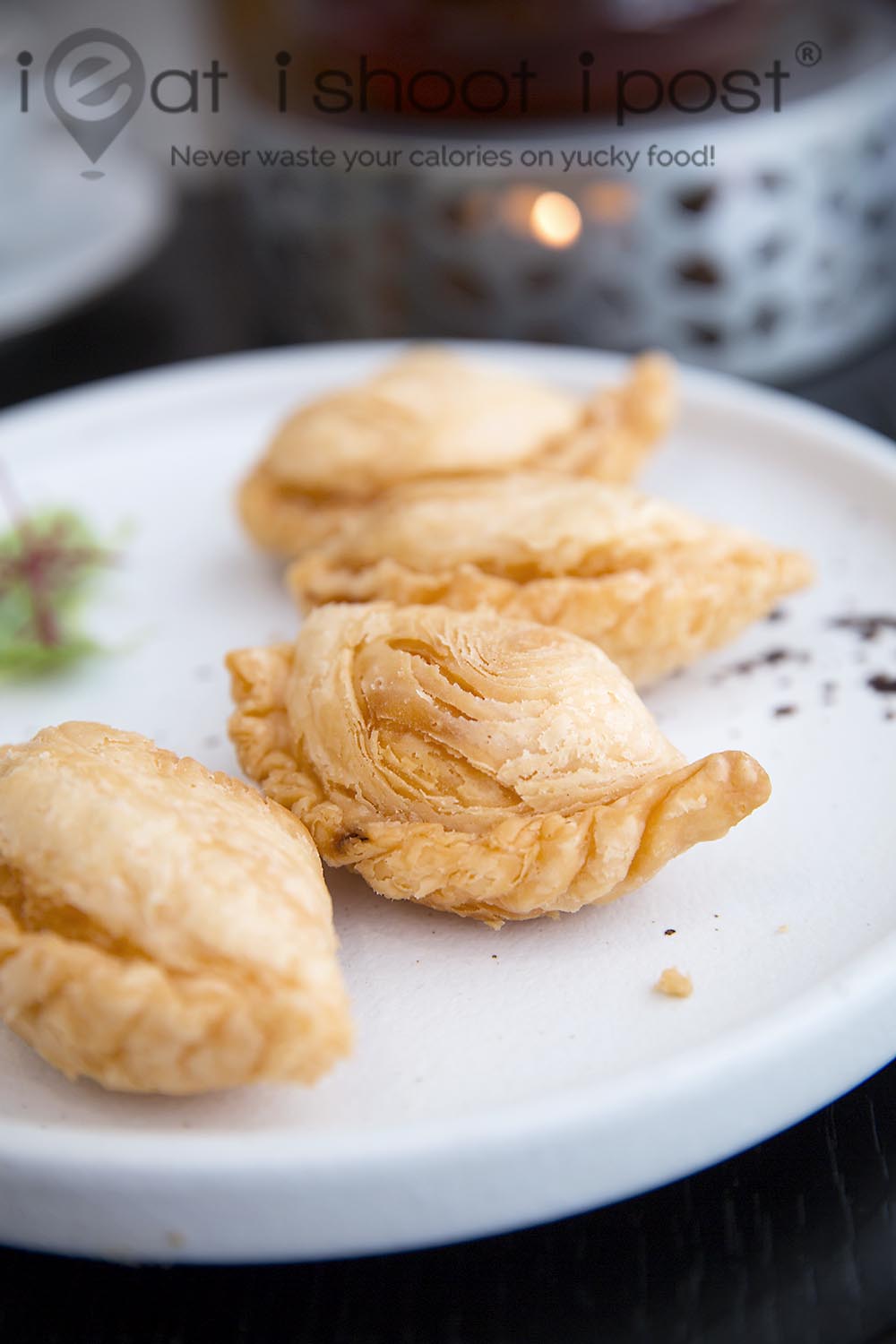
Their scallop pastry was also a very pleasant surprise. Who would have thought that scallops and garlic stuffed in a curry-puff shaped flaky pastry can leave one yearning for more even at the end of the meal? But this one is good enough to loosen your belt a notch to enjoy it! 4.5/5
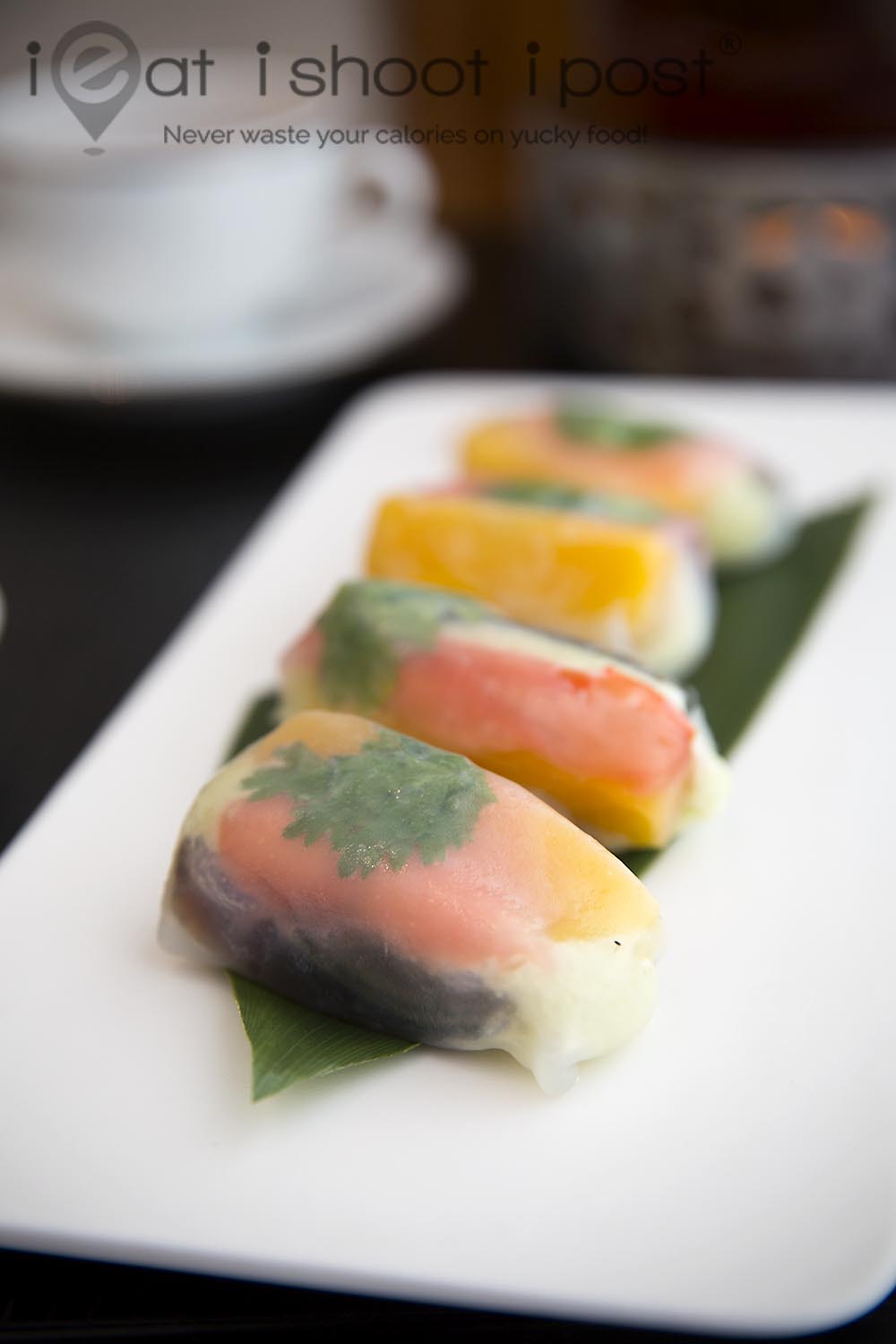
The beauty in the Chilled Crystal Dumpling is that the skin is still tender when cold. Most starches will turn hard when chilled, but the creative dim sum chefs at Hua Ting has managed to produce a skin made from water chestnut flour that remains soft and tender when served cold. The delicate skin is used to wrap an eclectic combination of century egg, mango and pickled ginger which is quite refreshing to the palate. 4/5
Yum Cha (Drink Tea)
We can’t have a Dim Sum tutorial without the mention of tea. In the past, the tea was the main focus while the dim sum dishes played only a supporting role. That’s why it’s still known as “Yum Cha” (drink tea) in Hong Kong.
Our Dim Sum was paired with Hua Ting’s premium tea blends including Jasmine Pearl, Imperial Pu Erh (2007) and their exclusive, (also my favorite) Dawn of Spring: Jasmine Pearl with Rosemary. In general, the steamed items are paired with the lighter green and jasmine teas while the fried items are paired with the bolder, oxidized teas like Pu Erh. The pairing of dim sum and tea, just as in wine pairing, really brings the enjoyment of the dim sum to the next level!
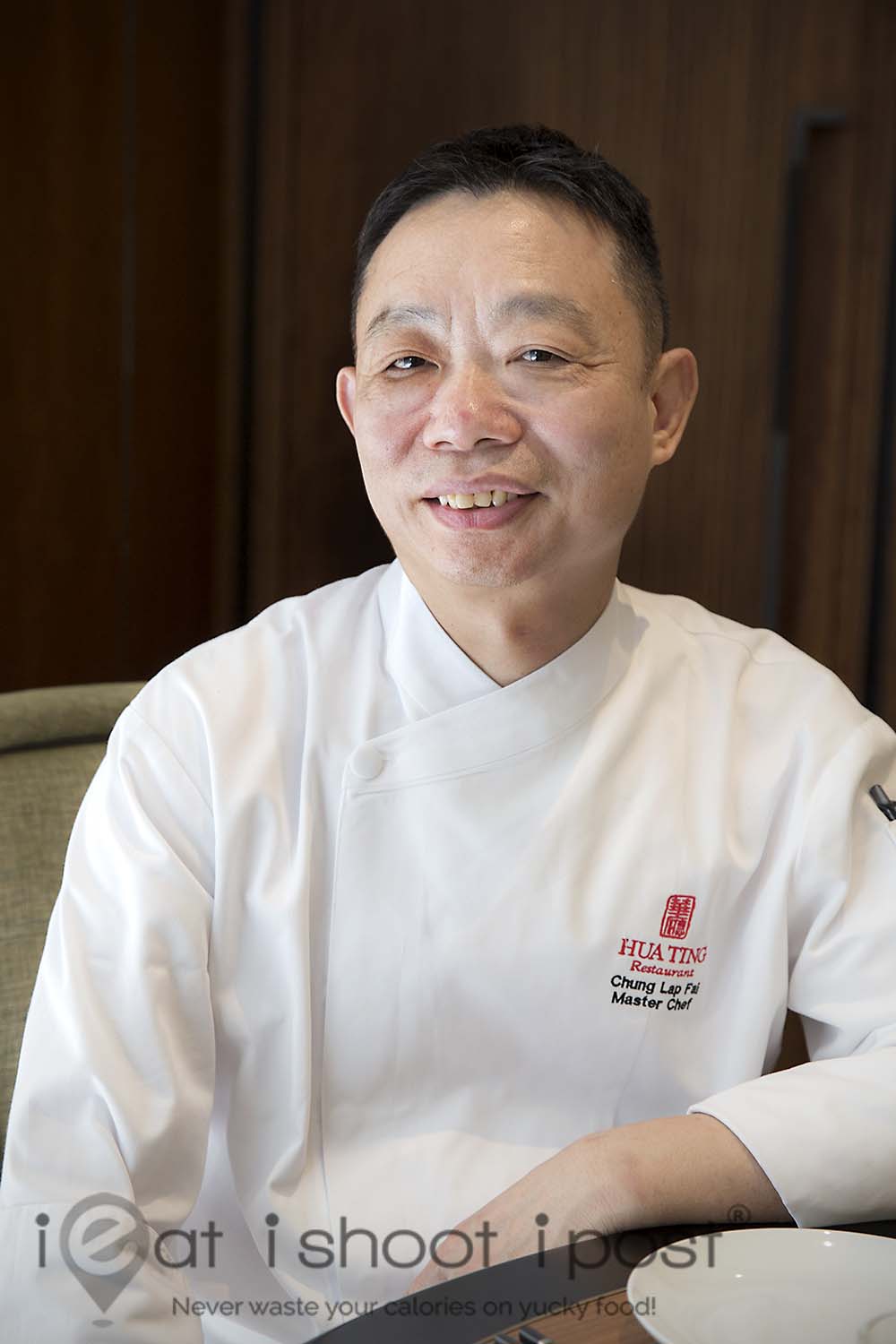
Hua Ting (华厅) Grand Oriental Hall

Much thought has been put into Hua Ting’s recent renovations and they now offer a variety of private dining areas. From intimate rooms for small groups of 4-6 to a “Chairman’s” room which features an impressive 20-seater table with an enormous lazy suzy and an expandable area that can seat up to 30 pax, you should be able to find the perfect space for that birthday party or small office event. Check out this video tour of the restaurant.
Conclusion:
It’s been truly enlightening to learn about the intricacies of the dim sum dishes we think we know so well. Armed with this knowledge we should be able to judge our future dim sum experiences more objectively. The basic items at Hua Ting (华厅 -Grand Oriental Hall) are at the level one would expect of a high end dim sum place but it is their signature items that set them apart.
Disclosure: We acknowledge the assistance of Chef Lap Fai and Orchard Hotel for this article. The food was provided but no fees were paid for this review.



